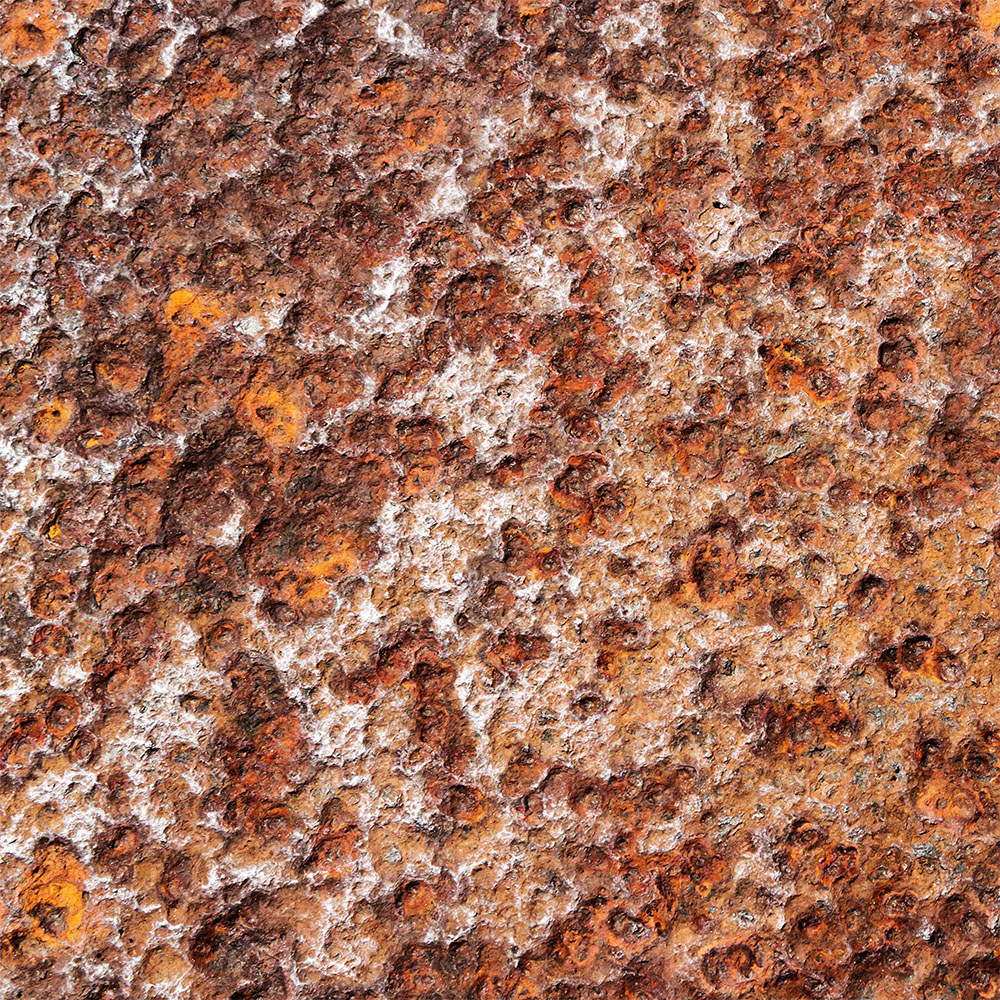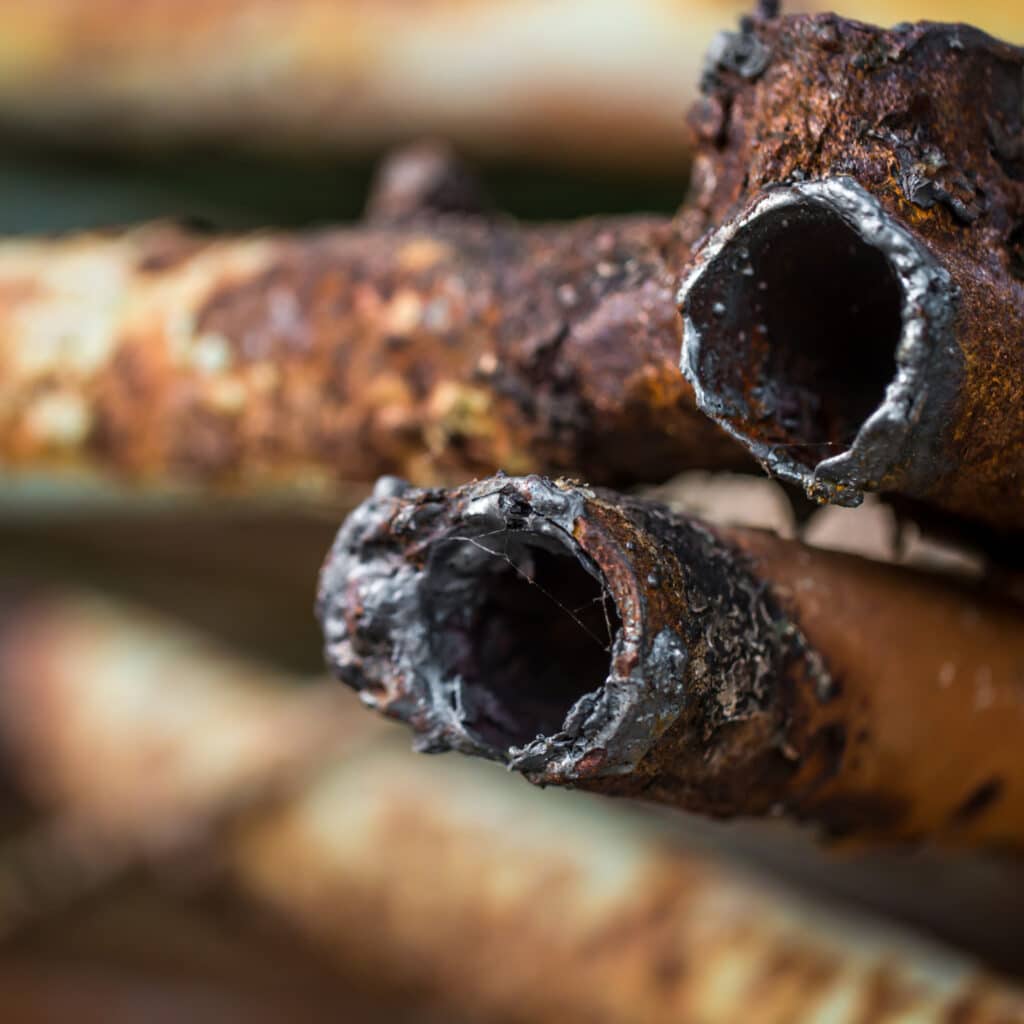An example of dealloying is the dezincification of brass. Dezincification occurs when brass, an alloy of copper and zinc, is exposed to corrosive environments, leading to the selective removal of zinc. This leaves behind a porous, weakened structure of copper, which can compromise the integrity and mechanical strength of the brass component. Dezincification often occurs in plumbing systems, where brass fittings are exposed to water containing chlorides or other aggressive chemicals.
dealloying overview
What is Dealloying?

What Causes Dealloying?
Several factors influence the occurrence and severity of selective leaching in mechanical applications. Some of which include:
-
Material Properties
The composition, microstructure, and metallurgical history of the materials involved play a significant role in determining their susceptibility to dealloying.
-
Environment
The chemical composition, temperature, and pH of the operating environment can affect the aggressiveness of the selective leaching process, influencing the extent of selective leaching.
-
Electrochemical Factors
The electrochemical properties of the alloy components, such as their electrochemical potential difference and standard reduction potentials, can influence the rate of leaching by determining the susceptibility of the components to dissolution.
-
Galvanic Coupling
The presence of galvanic coupling between the alloy components or with other metals in the system can accelerate the selective leaching process by increasing the electrochemical potential difference.
-
Passive Film Formation
The presence and stability of passive films on the alloy surface can affect the dealloying process by providing a barrier to selective leaching.
-
Exposure Time
Naturally, the duration of exposure to the corrosive operating environment can impact the extent of dealloying, as longer exposure times typically result in increased material loss.

Mitigating Dealloying
As with any metal failure mode, there are several mitigation strategies that can minimize the occurrence and severity of dealloying in mechanical applications, including:
-
Material Selection
Choose materials with suitable properties, such as low susceptibility to selective leaching and stable alloy compositions, to reduce the propensity for dealloying.
-
Passive Coatings
Apply protective coatings or surface treatments, such as electroplated chromium or conversion coatings, to improve the corrosion resistance and provide a barrier to selective leaching.
-
Environment Control
If possible, control the operating environment by reducing exposure to aggressive chemicals, minimizing temperature fluctuations, and controlling pH levels to reduce the rate of dealloying.
-
Cathodic Protection
Implement cathodic protection techniques, such as sacrificial anodes or impressed current systems, to reduce the electrochemical corrosion rate and minimize the detrimental impact of dealloying.

Armoloy's Solution to Dealloying

Armoloy offers multiple metal surface treatments with varying levels of protection from the common causes of metal failure. Offering both broad-spectrum and industry-specific applications, our protective metallic coatings add significant value through increased performance and decreased revenue losses from unplanned maintenance and downtime.
Our protective coatings ensure a thin, precise coat that won’t impact production, but will improve surface hardness and prevent environmental defects. Beyond increasing wear life, Armoloy tailors our metallic coatings based on the specific requirements of your application and industry.
Dealloying is a complex and detrimental corrosion mechanism that affects a myriad of mechanical systems across an array of industries. By addressing this failure phenomenon, engineers can reduce its negative impact on numerous applications, ensuring optimal operating performance and durability.
Frequently Asked Questions
Selective leaching (also called dealloying) is a type of corrosion where one element is removed from an alloy, leaving behind a weakened, porous structure.
This process typically occurs when an alloy is exposed to an electrolyte that preferentially dissolves one metal. A common example is dezincification, where zinc is leached out of brass, leaving behind copper. The remaining material becomes brittle, porous, and structurally compromised.
Selective leaching reduces the mechanical strength, durability, and conductivity of the metal, making it a major concern in piping systems, valves, marine environments, and chemical processing equipment.
To learn how to prevent this form of corrosion, see our FAQ on how to prevent selective leaching.
Selective leaching — also known as dealloying — is a corrosion process in which one element in an alloy (like zinc in brass or iron in cast iron) is preferentially removed, weakening the metal structure. Effective prevention methods include:
- Alloy Selection: Use dealloying-resistant materials, such as dezincification-resistant brass (DZR) or high-silicon cast iron, especially in plumbing, valves, and pump components.
- Barrier Coatings: Apply protective coatings like thin dense chrome, epoxy, or polymer linings to isolate the alloy from corrosive environments.
- Corrosion Inhibitors: Add chemical inhibitors (e.g., orthophosphates) to water systems to reduce leaching potential.
- Environmental Control: Design systems to avoid stagnant water, acidic pH, or high chloride concentrations — all of which accelerate leaching.
- Cathodic Protection: Use galvanic or impressed current systems to counteract electrochemical reactions that drive selective leaching.
These strategies are especially important in marine systems, potable water lines, fire protection systems, and chemical processing equipment, where long-term material integrity is critical.

Partner With Us
Eliminate dealloying from your operations. Meet our group of curious, innovative engineers and learn how we can help improve your industry with science-based solutions.




